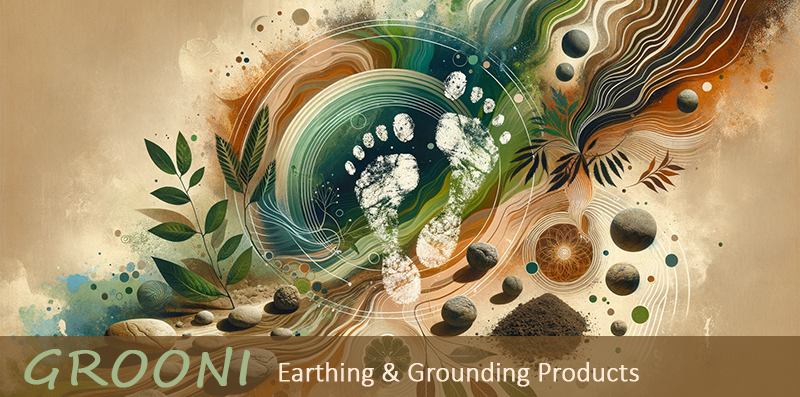
Picture this: You’re standing barefoot on the grass, feeling the Earth beneath your feet. It’s calming, it’s refreshing—and as it turns out, it might be scientifically beneficial. Grounding, or earthing, is the practice of connecting directly with the Earth to restore and balance our body’s electrical charge. While it might seem a bit “out there,” grounding has a solid basis in science.
Contents
What Is Grounding?
Grounding, also known as earthing, is the act of physically connecting with the Earth’s surface, typically by walking barefoot on natural ground like grass, sand, or soil. The idea is that by touching the ground directly, we allow electrons from the Earth to flow into our bodies, helping to stabilize our body’s electrical charge. Sounds simple enough, right? But there’s some fascinating science behind why this connection may be beneficial.
The Earth’s Natural Charge and Our Bodies
The Earth has a slight negative charge, which means it has a surplus of electrons. Our bodies, on the other hand, can build up positive charges, especially when we’re exposed to things like artificial EMFs (electromagnetic fields) from electronic devices. When we connect with the Earth, the flow of electrons from the ground helps neutralize these charges, potentially balancing our body’s internal electrical state.
This balancing act may seem subtle, but proponents of grounding argue that it has a profound effect on health. Many who practice grounding report feeling calmer, less stressed, and even physically healthier, thanks to this simple act of connection with the Earth.
How Does Grounding Affect Health?
Research on grounding has uncovered potential benefits that range from reduced inflammation to improved sleep quality. Let’s look at some of the key ways grounding may support health and wellness.
Reducing Inflammation
Inflammation is part of the body’s natural healing response, but chronic inflammation can contribute to a host of health issues, from arthritis to heart disease. Grounding is thought to help reduce inflammation by neutralizing free radicals, which are molecules that can cause damage to cells and increase inflammation.
Studies have shown that grounding can lower blood viscosity, a factor linked to inflammation and cardiovascular risk. By “grounding out” free radicals, the Earth’s electrons may provide the body with a defense against excessive inflammation.
Improving Sleep Quality
Grounding has been linked to better sleep quality, possibly due to its effects on the body’s natural rhythms and stress levels. Our modern environment often disrupts our body’s circadian rhythm, leading to poor sleep. By spending even a few minutes grounded each day, many people report deeper, more restful sleep.
One study found that participants who slept on a grounding mat had a more regular circadian cortisol rhythm. Since cortisol is a hormone closely linked with stress and wakefulness, grounding may help regulate sleep patterns, allowing for more consistent, restorative rest.
Reducing Stress and Anxiety
Grounding may also support mental wellness by reducing stress and anxiety. The physical connection to the Earth has a calming effect on the nervous system, promoting a shift from the “fight-or-flight” sympathetic mode to the more relaxing “rest-and-digest” parasympathetic mode. This shift allows the body to calm down, reducing the stress response and making us feel more grounded—literally and figuratively.
Scientific Evidence Behind Grounding
The idea of grounding might sound simple, but scientific studies have provided support for its effects on health. Here are some key findings from research on grounding.
Research on Blood Viscosity
One of the most intriguing studies on grounding looked at its effect on blood viscosity, or “thickness.” High blood viscosity is associated with cardiovascular disease, as it makes it harder for the heart to pump blood effectively. In a study published in the Journal of Alternative and Complementary Medicine, researchers found that grounding reduced blood viscosity, which could support cardiovascular health and reduce inflammation.
Effects on the Nervous System
Other research has focused on grounding’s impact on the nervous system. One study showed that grounding had a calming effect on the autonomic nervous system, the part of our nervous system responsible for regulating stress. By promoting a shift toward the parasympathetic (rest) state, grounding can help reduce the physical effects of stress, making it easier for the body to relax and repair.
Ways to Practice Grounding
You don’t need special equipment to practice grounding, but there are a few simple ways to integrate it into your daily routine. Whether you’re outside in nature or indoors, here are some practical methods for grounding.
Outdoor Grounding Techniques
- Walking Barefoot: The most natural form of grounding, simply walking barefoot on grass, soil, or sand allows for direct contact with the Earth.
- Sitting on the Ground: Sitting or lying down on natural surfaces like grass or sand provides grounding contact, especially if you place your hands or feet directly on the ground.
- Swimming in Natural Water: Water is a conductor, so swimming in lakes, rivers, or oceans also provides grounding benefits.
Indoor Grounding Options
If you’re in a city or spend most of your time indoors, grounding products like grounding mats, sheets, or shoes can help you connect with the Earth’s energy. These products are made with conductive materials that can transfer electrons from the Earth into your body when properly grounded to an electrical outlet.
Frequently Asked Questions about Grounding
With grounding’s rising popularity, it’s natural to have questions about how it works and its effects. Here are some common questions people ask about grounding and the science behind it.
Is Grounding Safe for Everyone?
Grounding is generally safe for most people and doesn’t require special equipment or training. However, if you have an implanted medical device, like a pacemaker, consult your doctor before using grounding products that connect to an electrical outlet.
How Long Should I Ground Each Day?
There’s no strict time requirement, but spending at least 20 minutes grounded each day is a good starting point. Many people find that even a few minutes of grounding can provide noticeable benefits, especially for mental clarity and stress reduction.
Can Grounding Help with Specific Health Conditions?
While grounding isn’t a cure, it may provide relief for some health issues, especially those linked to inflammation, stress, and sleep disorders. Many people with conditions like arthritis, chronic pain, and insomnia report feeling better after adding grounding to their routine. However, grounding should be used as a complementary practice, not a replacement for medical treatment.
Integrating Grounding into Your Wellness Routine
Grounding can be a valuable part of any wellness routine, supporting both physical and mental health. Here are some tips for incorporating grounding into your lifestyle, no matter where you are.
Start with Small Steps
If you’re new to grounding, start small. Take a few minutes each day to walk barefoot outside, or use a grounding mat while you work. By making grounding a simple, consistent practice, you’re more likely to stick with it and experience its benefits.
Combine Grounding with Other Wellness Practices
Grounding pairs well with other relaxation techniques like yoga, meditation, and mindfulness. Try grounding while practicing deep breathing or stretching exercises to enhance relaxation and support mental clarity. Combining grounding with mind-body practices can amplify its calming effects.
Be Mindful of Environmental Factors
While grounding is a natural practice, it’s best to avoid areas that might expose you to chemicals or pollutants. Choose clean, natural environments whenever possible to ensure a safe and effective grounding experience.

